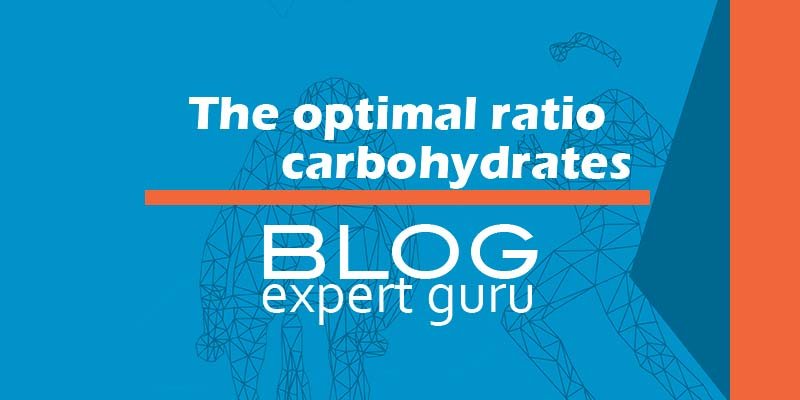The absorption of carbohydrates via the intestinal epithelium is achieved by transport proteins. Glucose is transported by a sodium-dependent glucose transporter 1 (SGLT1). This protein becomes saturated with a high glucose intake of approximately 60g per hour. GLUT5 is another transporter that transports fructose. If both transporters are used simultaneously, it is possible to absorb more carbohydrates. The result is more energy to the muscles and an improvement in performance.
When glucose and fructose are combined, oxidation rates are 50% higher compared to glucose intake alone.
The highest oxidation rates were observed at an intake of 144 g/hour, but the best results were obtained at around 100 g/hour as this resulted in the lowest residual volume. When we ideally consume 100 grams of carbohydrates, we want all of these carbohydrates to be used and we want as little of them as possible as residual volume in the intestine. The more carbohydrates remain in the stomach, the greater the risk of intestinal problems. The highest oxidation efficiency was observed with the intake of 108 g/h as glucose and fructose in a ratio of 2:1.
Ratio(s) of carbohydrates
90 grams per hour (2:1 ratio) is a safe amount to consume, as very few athletes exhibit gastrointestinal problems at this level. With increasing intake above 90 g/hour there is an increasing risk that a number of individuals will not tolerate the amounts well.
Is 2:1 the optimal ratio?
There is no optimal ratio. The optimal ratio will change depending on the amounts ingested. If 90g/hour is taken this should be about 2:1, but if more is taken, for example 120g/hour, 1:1 is probably better. There are many commercial preparations with claims about the best ratio, but the reality is that there is no best ratio.
For the time being we can conclude that intake should be individualized based on tolerance. This tolerance can be trained by training the intestines, but intake should be based on what is easily tolerated. Higher intakes should be aimed for, especially at high levels. It is the desired intake that will then determine what the optimal ratio is.
We should always aim for a glucose intake of around 60-70 g/hour, but not higher, and we can add fructose on top of that. Below are some examples:
If I can tolerate 80 g/hour, I would consume 60 g/hour of glucose and 20 g/hour of fructose. This would be a ratio of 3:1.
If I can tolerate 100 g/hour, I would consume 60 g/hour of glucose and 40 g/hour of fructose. This would be a ratio of 3:2.
All possible ratios are available within the NutrID Kerosine and the KerosineRS+;
Kerosine :
- 90 g/hour: Ratio 2:1
- 100g g/hour: Ratio 3:2
- 120 g/hour: Ratio 1:1
KerosineRS+ :
- 90g/hour: Ratio 2:1
- 80g/hour: Ratio 3:1
- 70g/hour: Ratio 6:1
- 60g/hour: Ratio 1:0 (fructose-free!)
All brands and products on the market use a combination of maltodextrin and fructose. NutrID is the only brand (!) which uses cluster dextrin in addition to maltodextrin to supply glucose in the sports drink.
Cluster Dextrin, also known as Highly Branched Cyclic Dextrin (HBCD), is a new advanced dextrin variety. Cluster Dextrin differs from other high GI carbohydrates such as dextrose and maltodextrin in that it provides a sustained release of energy as opposed to a sudden spike in blood sugar and a large insulin response. As the name already indicates, the dextrin is clustered. Cluster Dextrin has a high molecular weight, a narrow weight distribution, is soluble and has an osmotic pressure of almost zero. In basic terms, Cluster Dextrin passes through your stomach faster than other carbohydrate supplements, making it available more quickly for your body to burn energy. After passing through the stomach it breaks down into the individual dextrin units and is broken down into glucose. After which the glucose is absorbed via the intestinal epithelium.
What can we take away from all this?
Since 2017, NutrID has been a pioneer in the field of sports nutrition for endurance athletes. Customization remains the way for the individual athlete to get the most out of their own potential. NutrID continues to innovate on the path to top performance.
[Bron : Mysportsciene.com]







